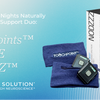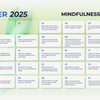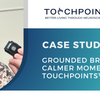Managing ADHD Symptoms with TouchPoints

Attention Deficit Hyperactivity Disorder (ADHD) is a neurodevelopmental condition that affects people of all ages, impacting various aspects of daily life. While traditional interventions exist, a new player, TouchPoints, has entered the field. In this blog post, we'll explore the potential of managing ADHD symptoms with TouchPoints and how this innovative technology could offer support and relief.
Understanding ADHD: A Complex Challenge
ADHD is characterized by persistent patterns of inattention, hyperactivity, and impulsivity that can interfere with daily functioning. Individuals with ADHD may face challenges in academic, occupational, and social settings, requiring a multi-faceted approach to address their unique needs.
The Role of Stress in ADHD Symptoms
Stress exacerbates ADHD symptoms, creating a cycle that can be challenging to break. The heightened stress response can impact focus, attention span, and emotional regulation. Addressing stress is a crucial component of managing ADHD effectively.
Introducing TouchPoints: A New Approach
TouchPoints utilize Bilateral Alternating Stimulation Tactile (BLAST) technology to engage the nervous system. This gentle, rhythmic micro-vibration has shown promise in reducing stress and promoting a sense of calm. Now, let's explore how TouchPoints may be a game-changer in managing ADHD symptoms.
1. Calming Hyperactivity:
The calming effect of TouchPoints may help individuals with ADHD manage hyperactivity. By using TouchPoints during periods of increased energy or restlessness, individuals may experience a more grounded and focused state.
2. Improving Attention and Focus:
The ability to sustain attention is a common challenge for those with ADHD. TouchPoints, when used strategically, may contribute to improved attention and focus by creating a more conducive mental state.
3. Stress Reduction for Emotional Regulation:
Emotional dysregulation is another facet of ADHD. TouchPoints, by targeting stress reduction, may aid in emotional regulation, helping individuals navigate intense emotions more effectively.
Incorporating TouchPoints into ADHD Management:
- Tailored Settings: Explore the various settings on TouchPoints and identify those that align with ADHD symptom management. Experiment with different rhythmic patterns to find what works best for individual needs.
- Consistent Usage: Consistency is key. Incorporate TouchPoints into daily routines, especially during situations that typically trigger ADHD symptoms, to foster a more balanced response over time.
- Customized Strategies: Work with healthcare professionals to develop a personalized strategy for integrating TouchPoints into existing ADHD management plans. Every individual is unique, and a tailored approach ensures the best outcomes.
Exploring New Frontiers in ADHD Management
As we navigate the complex landscape of ADHD management, embracing innovative tools like TouchPoints offers a fresh perspective. While not a standalone solution, TouchPoints could be a valuable addition to the toolkit for individuals seeking comprehensive strategies to manage ADHD symptoms.
Are you curious about the intersection of technology, stress management, and ADHD support? Dive deeper into the world of TouchPoints and discover how this technology may contribute to a more balanced and empowered approach to living with ADHD.




